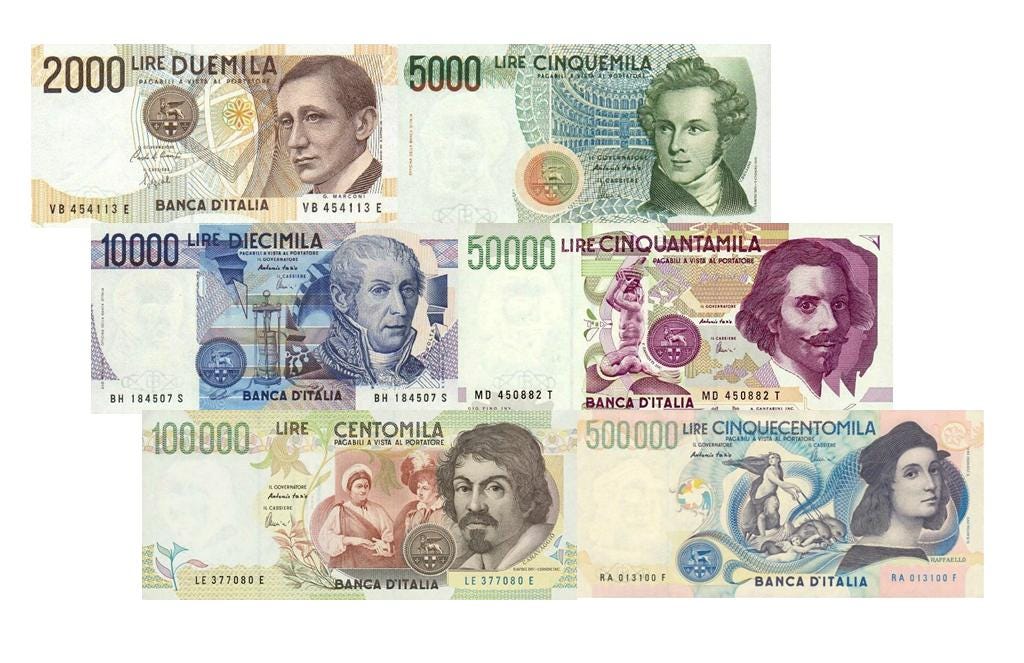The Copernicus of Cocaine
And how he owes his arrest to the greed of Colombian narco bosses, a fake-real bank, and the namesake of an Italian actress.

Continued from this post on Espionage&.
When Skip Latson and Bill Bruton proposed setting up a fake bank to their superiors, the targets they had in mind were Colombian, with Pablo Escobar at the top of the list. And as soon as it opens, RHM Trust Bank gets its first clients from among the Colombians thanks to introductions by Dan the money broker.
And because it offers excellent rates, arranges cash pick ups efficiently, and even provides ancillary services that money launderers need, word soon spreads among narcos. The amount of money being laundered through RHM increases, and its list of clients becomes longer. But Pablo remains elusive. In fact, none of the kingpins — be they from Medellín or from the Cali cartel — directly transacts with RHM.
The DEA redoubles its efforts. A financial consultant collaborating covertly with them makes contact with Carlos Alberto Mejía (also known as Pipe), who is suspected of laundering money for the Cali cartel. Soon, things get particularly interesting for RHM. But only after a horse suffers an unfortunate loss.
My kingdom for a horse
Roberto Escobar Gaviria, the younger brother of Pablo Escobar, is the accountant and co-founder of the Medellín Cartel. As befits a filthy rich narco boss, Roberto has an expensive hobby: horses. His favourite is a horse called Terremoto de Manizales.
In 1992, Jorge Ochoa and his brothers — founding members of the Medellín Cartel — take Terremoto from his owner and send him to stud at a farm in La Loma. The horse is kidnapped by a paramilitary group called Los Pepes, short for Los Perseguidos por Pablo Escobar (literally, Those Persecuted by Pablo Escobar). Los Pepes decide to poke the Escobar family in the eye by castrating their beloved Terremoto.
This, reportedly, spooks a bunch of narco bosses including Carlos Mejía, who hands three paintings — by Picasso, Rubens, and Reynolds — to an intermediary of RHM Trust Bank for safekeeping. They are valued at $15 million. He also begins using the bank for money laundering. Apart from transactions that originate in the United States, which Latson and Bruton expect, Mejía also receives a $2.5 million transfer from Italy.
In order to investigate that connection, they involve the Italian authorities.
Maria Monti
But try as they might, they just can’t catch up. Mejía’s Italian partners are careful to the point of paranoia. The phone calls they make are never from traceable phones. The language they use in those conversations is full of codes that leave the authorities flummoxed. And the financial transfers they effect as part of their laundering schemes are quick and bewildering.
Struggling to make sense of what they are dealing with in Italy, the Italians decide to infiltrate an agent into the organisation. After a quick search, they have a list of one: a young inspector with experience in prosecuting money laundering crimes. She is given a crash course by the DEA, and the alias Maria Monti.

But instead of insinuating herself into the Italian end of the operations, she is flown to Colombia.
With RHM’s introductions paving the way, she insinuates herself as a financial advisor and charms her way into Mejía’s good books. After a few months — and a number of profitable financial transactions — Mejía introduces her to his Italian partner: Pasquale Locatelli.
But Locatelli is paranoid, and Monti has to jump through hoops — including boarding Locatelli’s yacht and discussing investment and laundering opportunities while they sail. Finally, she manages to convince him of her financial abilities and the value she might deliver.
Soon, she finds herself handling millions of dollars — often cash delivered to her in briefcases — for Locatelli. Within a month and a half, Locatelli’s business partners have already used her services to launder billions of Lira through RHM Trust Bank. And the Italian authorities realise, through her efforts, that Pasquale Locatelli is the man responsible for importing tons of cocaine from Colombian cartels and distributing it throughout western Europe.
How much is too much?
Right around this time, the brains behind RHM are becoming nervous. Their narco clients are demanding that they provide additional services. Since these services haven’t been approved by their bosses at the DEA and IRS, Latson and Bruton risk implicating themselves in those crimes. As the pressure from the narcos increases, they decide to pull the plug on the whole thing.
For their part, the Italians pull Monti out. And then, in a bust coordinated by the DEA, FBI, and police forces across two continents, 9 tons of cocaine and $90 million in cash is seized. 116 individuals are arrested. Including the man known as Diabolik and the Copernicus of Cocaine, Pasquale Locatelli. As part of Operation Dinero, the Italian authorities also sieze four large ships laden with cocaine and weapons. The ships belong to Locatelli, a small part of his fleet. They are intercepted while on their way to Croatia.
Locatelli is believed to have a net worth in the hundreds of millions of dollars in 1994. He continues running his cocaine business from prison for a considerable time after his arrest. Zero Zero Zero by Roberto Saviano provides a fascinating account of the Copernicus of Cocaine’s life and work. I cannot recommend the book highly enough for the perspective it provides on the global cocaine trade.
While you’re here…
Have you read my spy novels? Let Bhutto Eat Grass is a highly acclaimed series of 4 spy novels set in India, Pakistan, and Europe during the Cold War. They follow Indian intelligence’s efforts to sabotage Pakistan’s attempts to steal nuclear weapons technology.








